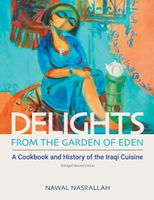Advertisement
The Rhombus Allure
Published 2019
The rhomboid, like the triangle, was a very familiar symbol in ancient Mesopotamia. We learn from Gods, Demons and Symbols of Ancient Mesopotamia that it was ‘closely associated in art with the goddess Ishtar (Inana),’ goddess of love and fertility among other attributes. In plain English, the rhombus was an emblem of her vulva. Several clay figurines shaped like triangles and rhomboids were excavated in her temple at Ashur. They seem to have had ‘a magically protective function.’ They were believed to have some sort of ‘amuletic property.’ Babylonian incantations composed to help cure impotence ask that such figurines be made and ‘placed at the head of the bed during intercourse’ (Black and Green). So perhaps the popularity of cutting our pastries and candies into rhomboidal shapes has its distant and deep roots in such ancient practices and beliefs. We eat the food and pray for its protective powers through the ancient science of seductive geometry.


